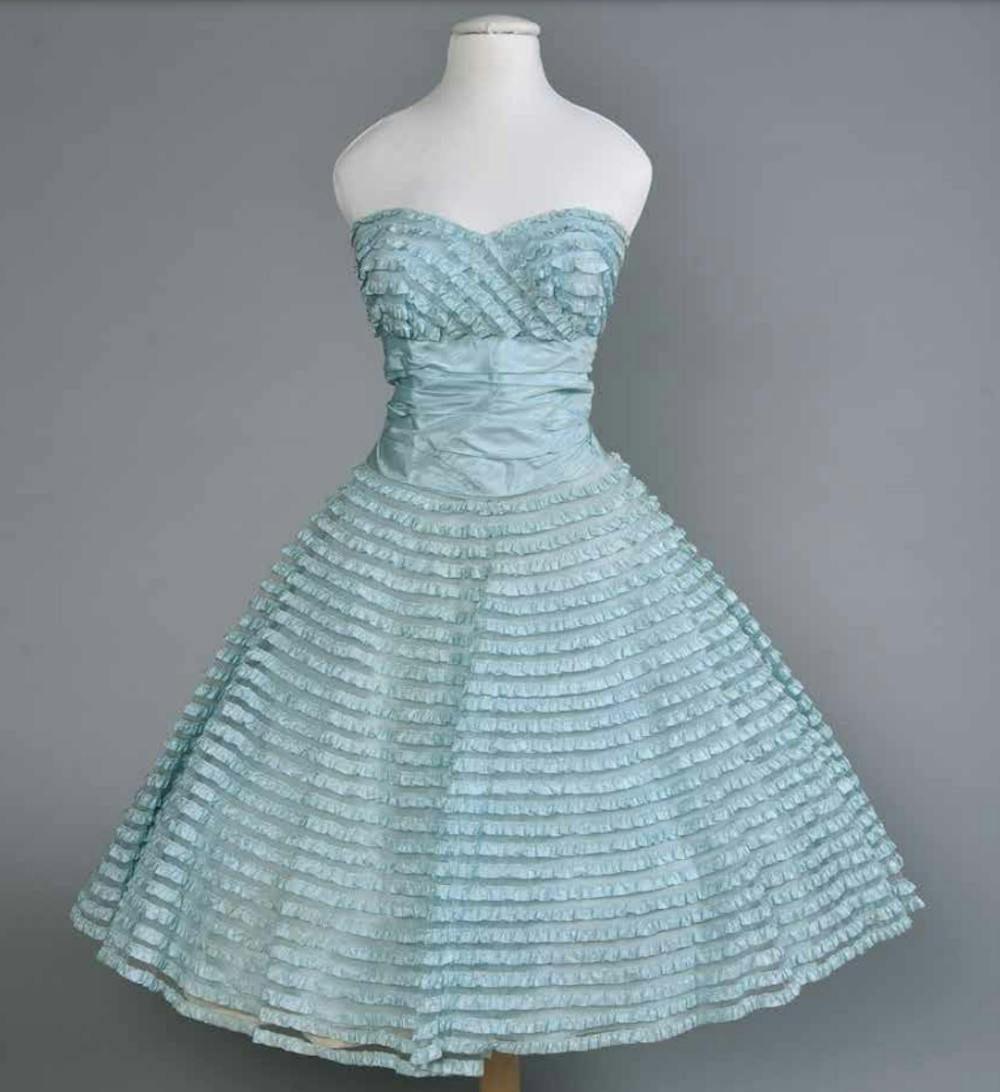Pants were just beginning to come into style in the 1930s, going from socially unacceptable and immodest to something modern, stylish women wore. The 30s saw the rise of women’s trousers in the public eye thanks to movie stars like Katherine Hepburn, but they were still not as prevalent or acceptable as they are today. The 1940s saw a major change.
The beginning of the 1940s was dominated by World War II. According to the US National Archives, the United States experienced an extreme – although temporary – shift in gender roles. Nearly one in three men left to serve in the military between 1941 and 1945, so women were left to take up the work that was still left to do. Women managed households, but also worked in factories, labs, government and military auxiliaries.
The war meant that fashion’s development slowed. Men and women alike were seen in uniform, and those outside the war wore styles dictated by rationing and work. The style that was adopted by women in the 40s became like that of the masculine military uniform or was dictated by where they worked. The US National Archives notes that blouses and jackets became militarized through shoulder pads, and hats worn resembled the military beret. Utility clothing became popular. To conserve fabric, skirts became shorter, and silhouettes became slimmer. Women’s utility dresses featured, according to Fashion History Timeline, “padded shoulders, a nipped-in waist and hems to just below the knee.”
The 1940s were when pants finally became more widespread. Rosie the Riveter was introduced in 1942, showing that workwear was in. Women were now in more labor-intensive positions, meaning that women were less concerned with glamor and style and more with practicality and safety. Working in factories called for a sturdy pair of trousers. Rather than flowy silk pants and high heels, women wore blue jeans and wraparound dresses, pinning back their hair so it did not get caught in machinery.
Trousers became more common for a few reasons. Many women wore them out of necessity and practicality when working. In the United Kingdom, women were faced with clothing rationing, which led them to wear their husband’s clothing. FamilySearch also points out the shortage of stockings, which gave women another reason to choose pants. Despite adoption by many working women, pants were still not acceptable evening wear or parties.
While women of the 40s held down America and blurred gender boundaries with pants and shoulder pads, the 1950s showed a clear gender divide. In 1947, Christian Dior introduced the “New Look,” which played on 40s trends but was ultimately more feminine. Fashion History Timeline notes the New Look’s nipped-in waist and full skirted silhouette. This look became very popular in the early 50s, and even as the style evolved, its core remained focal through many styles of the time.
As the 50s progressed, the silhouette became slimmer and straighter. As women began to look to the “teenager” for inspiration, Fashion History Timeline points out that the earlier elegance of past decades began to fade. Even though there was a shift away from this formality, fashion for women remained feminine and romantic, with big circle skirts and sundresses.
The Fashion Archives showcased this pale blue party dress in its collection focused on Shippensburg fashions. Darby Daniels Muggio wore this dress to her high school’s prom and then again to SU’s first Women’s Athletic Association dance in 1956. The dress was purchased from a shop in Harrisburg, PA. The dress showcases not only the less formal style of dress, but the frilly femininity that was pervasive.
In the 50s, a woman’s main goal was to be a good girlfriend, wife, and mother. After a decade of turmoil, many people wanted to turn inwards to their family life. 20th Century History Song Book mentions that a woman would be called an “old maid” if not married by 25. This was reflected in the feminine fashions of the time and a general idea that women needed to appear put together at all times. Women strived to look like the perfect housewife, far different from how women dressed for practicality and work in the 40s. The 50s were thus obsessed with excess fabric that could not be obtained in the 40s, says 20th Century History Song Book.
So where did pants fit in? Women did not give up trousers in the 50s, but the style evolved from the 40s wide leg pant. The 40s style was meant to mimic a more masculine style, but the femininity of the 50s called for a new trouser for women. Pants were still not seen on television or often outside of the home, but more were seen in advertisements and magazines. The most popular style was likely “cigarette pants,” notes Vintage Dancer, which featured a high waist, full hips, and a skinny fit through the leg, ending just above the ankle. Capri pants were very popular, with pedal-pushers coming into style. Dark blue denim jeans also emerged for fashion purposes, coming in both long and capri styles. Overalls or dungarees were both very popular looks.
The 40s and 50s led to a lot of social change in terms of fashion, with women coming out of the home and into the spotlight in the 40s to perform “men’s work.” While the 40s proved that women could work, the 50s were more about settling down with a husband. By the end of the war, people were looking for a return to normalcy, which brought about a focus on the nuclear family. With a heavier emphasis on femininity and attracting a husband, pants had faded again, or at least become more feminine. Gender divides were severe in the 50s, and this was reflected in fashion at the time. Pants had gone from acceptable to somewhat taboo again.


The Slate welcomes thoughtful discussion on all of our stories, but please keep comments civil and on-topic. Read our full guidelines here.